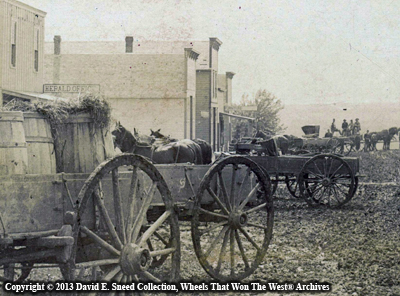When looking at a western vehicle there can benumerous possible variations in construction, design, and features. In fact, the wheels alone can harbor dozensof differences. Many of thosedistinctions can deal with the way the spokes are attached to the hub. Some lighter spring wagons may use a Sarvenhub while heavier wheels may employ an Archibald hub. Still others may utilize a metal-clad woodenhub. The more traditional methods use apainted wooden hub - but even then, there can still be variables in thedesign.
 |
| - Typical Wood HubSpoke Arrangement - |
Most often in early wagons, wooden hubs are mortisedto accept evenly spaced and similarly positioned spokes. Occasionally though, the spokes may bestaggered, with odd/even spokes alternating positions on the hub. These designs are referred to as “dodgemortised hubs” and they have a purpose beyond the unique and artistic look theydeliver. Early builders utilizing thisfeature commonly claimed that the arrangement helped brace, stiffen andstrengthen the wheel. In fact, manysmall child’s wagons from the period also used this configuration on thewheels.
Just as with modern day auto makers, early wagonmanufacturers used their fair share of innovative design, engineeredadvantages, and advertising hyperbole to set themselves apart from competitors. Today, we do ourselves and the individualvehicles proper justice when we notice these unique features. Ultimately, they’re all clues helping topiece together important stories from America’s early transportation history.

